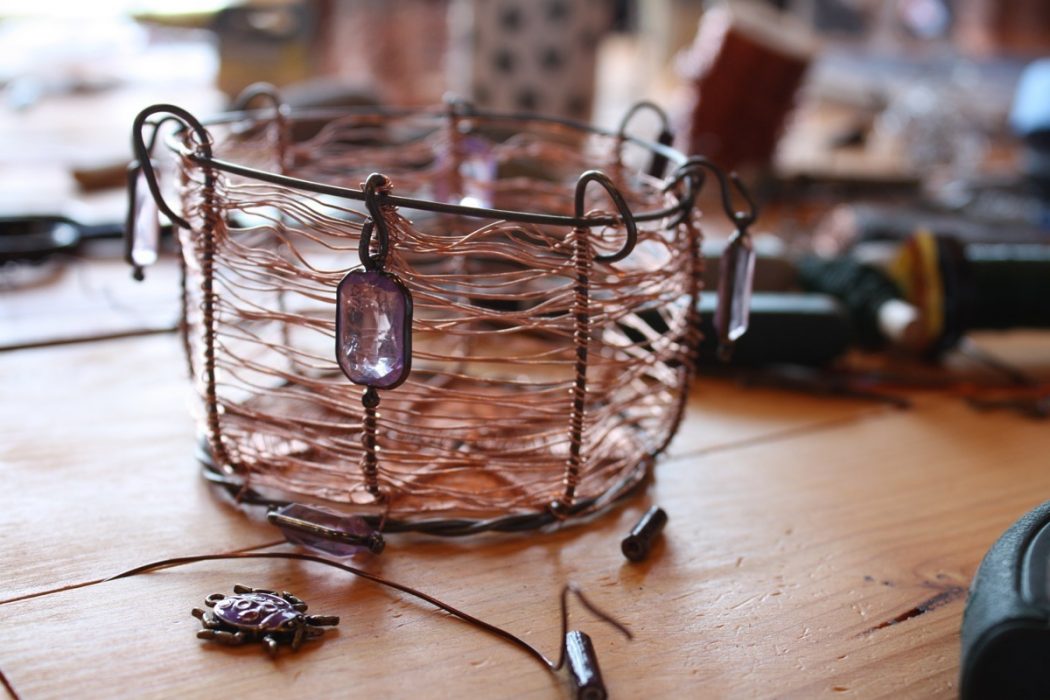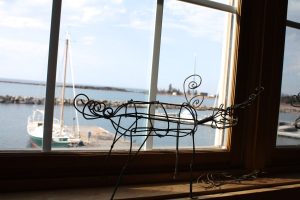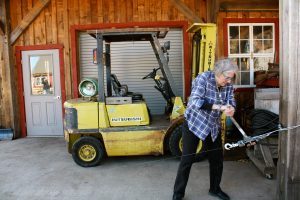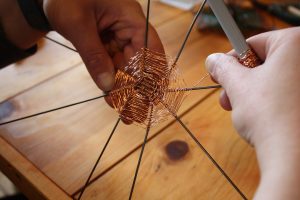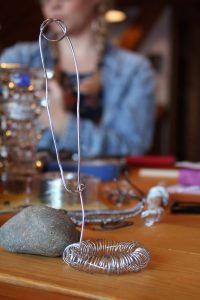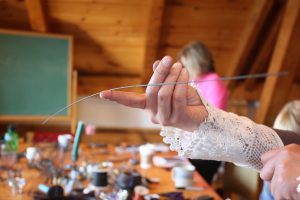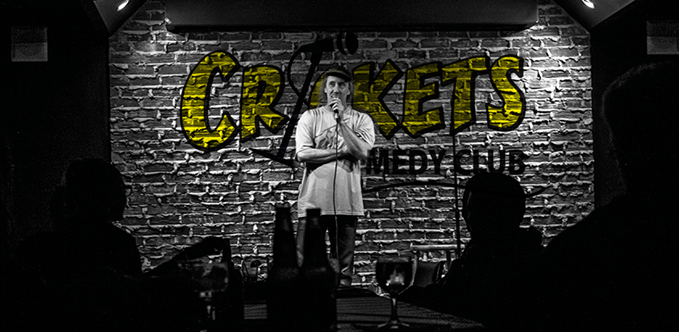Story by Tiffany Jarva, Photos by Rebekah Skochinski
The sweet smell of freshly cut wood hangs in the crisp morning air upon arriving at the North House Folk School in Grand Marais. At the moment, Lake Superior hugs the shore peacefully, and an outdoor community fire already burns embers, circled by handcrafted Adirondack chairs. I feel a little giddy soaking in the vibe of the place, where I’ll be for the next couple of days.
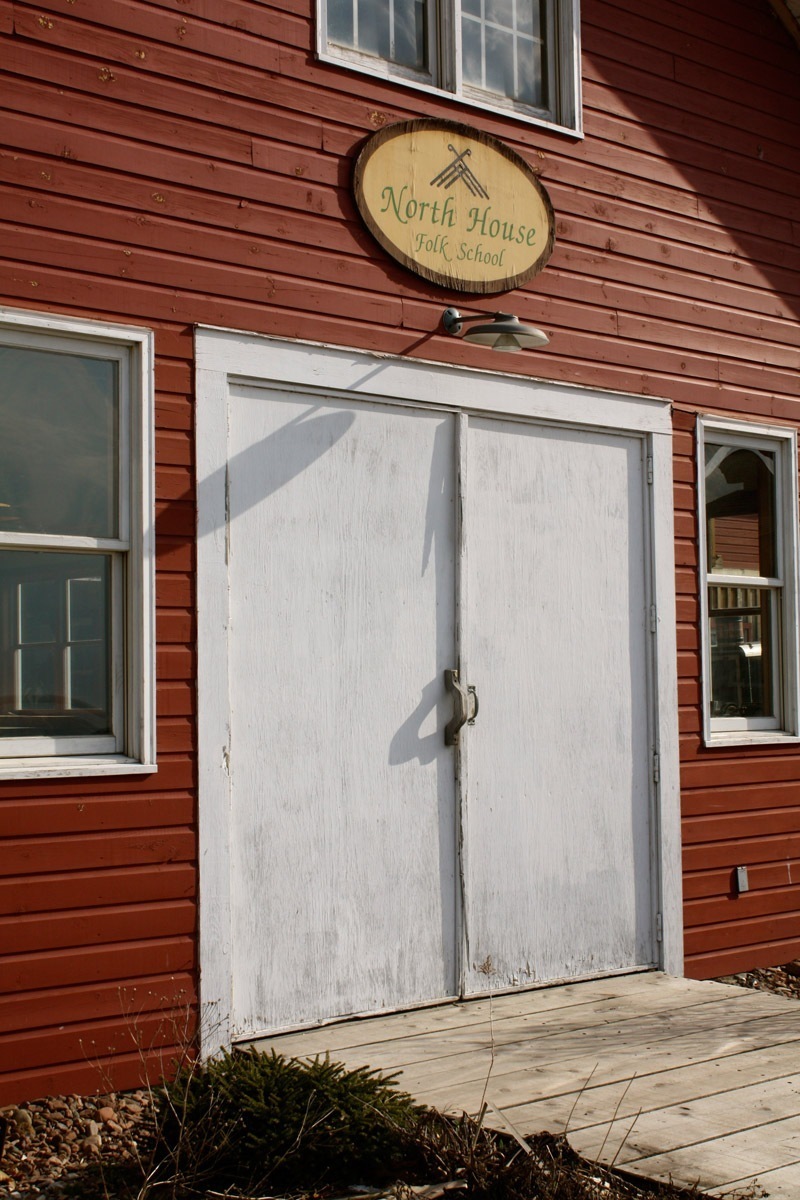
North House Folk School
It’s not yet nine on a Saturday morning and people are already moving through their crafts: measuring and cutting wood, prepping a kitchen for butchery basics, or organizing birch bark for basketry. There are more buildings than I realized—many painted brightly in the tradition of Scandinavia, modeled after the folk houses in Denmark. It was about 19 years ago when Mark Hansen, a jack-of-all-trades, brought people together to build boats. This sparked the creation of a like-minded community and the folk school was born, offering 26 classes that first year. Contrast this with 350 courses offered this past year, featuring 150 instructors, and 2,500 students.
After many years of wanting to take a traditional hands-on workshop, I am now finally here, about to learn all about Luffarslöjd—an old Scandinavian wire craft. There are six of us (from Wisconsin, Minnesota, and Canada) taking the course led by Faith Clover, who taught art education at the University of Minnesota before retiring, and is an active member of the American Swedish Institute.
We begin with a quick history lesson on the art of wire craft, which started in southern Europe in the 1600s as a way to mend clay jugs, spreading north to Scandinavia where farmers used wire to mend fences, and leftover pieces to make everyday items like whisks, baskets, and candle holders—all of which we will be making this weekend.
“On to the wire!” says Clover after her introduction. And on to the wire we go, start
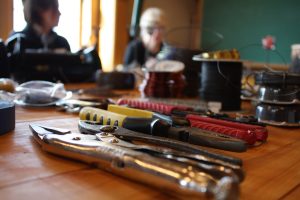
Simple tools and spools of wire dot a large worktable. Also known as “tramp” art during the Great Depression, men out of work would travel from farm to farm needing only a pair of pliers, some wire, and a willingness to work.
ing with a simple hook. “Get to know your
wire and what will work best,” advises Clover. “You’ll start to get a feel for it.” And I do. By the time I make my second hook, the weaving of the wire is much tighter, looking more like a hook than my first wild renegade piece.
By the end of the weekend, I make a candleholder and a copper box. And yes, my shoulder and hands are sore, and my technique not quite perfected, but I have experienced many laughs, sharing stories over fika (Swedish coffee break), meeting new and interesting people, and getting a sense of the community that embraces lifelong learning at the North House. Before I leave Grand Marais, I am already flipping through the summer course catalog, wondering what I can learn next.
- A moose made of wire watches us work in a North House classroom overlooking Lake Superior.
- Luffarslöjd instructor Faith Clover demonstrates how to pull heavy wire so it’s straighter and easier to bend.
- Weaving copper to make a box (see featured image)
- I actually made a whisk! Luffarslöjd origins are rooted in the craft of Scandinavian farmers who would use wire to mend fences, and any leftover bits to create both everyday and beautiful objects, using only one’s hands and simple tools.
- Wire is balanced on a finger to help find the middle without having to measure.


